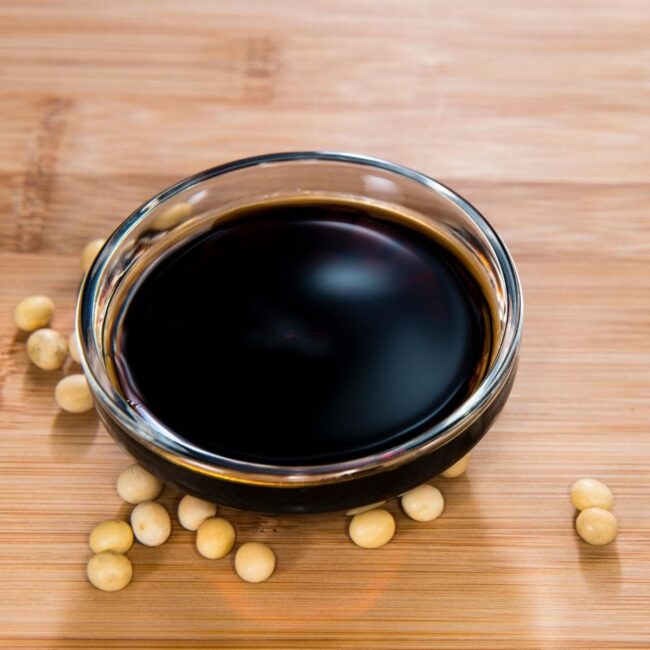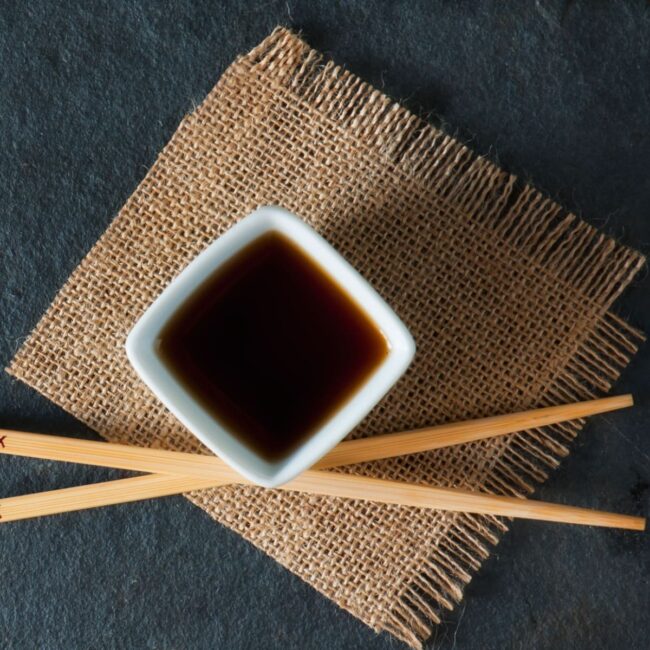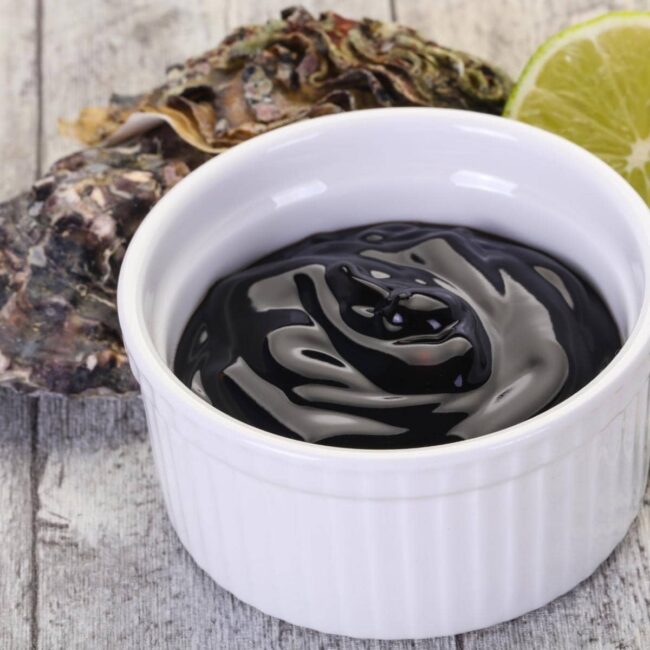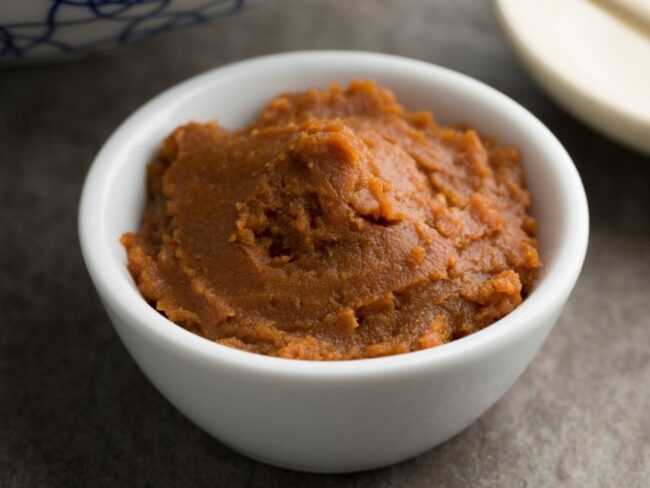10 Ideal Tamari Replacements for Bold Flavor
Tamari substitutes maintain the deep, umami-rich flavor needed in Asian-inspired dishes.
Soy-based and gluten-free options offer similar saltiness and complexity.
Some choices lean toward strong, bold seasoning, while others provide a more delicate background note.
Whether used for dipping, marinating, or stir-frying, the right alternative ensures a well-balanced dish.
What Is Tamari?
Tamari stands out in the world of sauces with its rich heritage rooted in Japanese cuisine.
Crafted through a meticulous fermentation process, this soy sauce captures a deep umami essence that many find irresistible.
As you cook, consider using tamari for marinades or salad dressings; it complements ingredients beautifully without overwhelming them.
Its wheat-free nature makes it friendly for anyone avoiding gluten while still offering a thick and flavorful alternative to traditional soy sauce.
Discovering tamari can inspire new culinary adventures, enhancing both familiar and experimental dishes alike.
Tamari Sauce Replacements to Consider
Various tamari alternatives can fit with different dietary needs and preferences. They provide a fresh take on familiar dishes, opening up creative possibilities in your cooking.
Soy Sauce
Tamari is often replaced by soy sauce in cooking.
This flavorful liquid comes from fermented soybeans, wheat, salt, and water.
Similar to tamari in taste, it does include wheat, which might not suit everyone.
Those without a soy allergy or gluten intolerance can enjoy it as a solid substitute.
When using soy sauce instead of tamari in recipes, simply measure the same amount for the best results.
A familiar choice for many kitchens makes it easy to find and use regularly.
Common Tamari Sauce Replacements to Consider
Various tamari alternatives can fit with different dietary needs and preferences. They provide a fresh take on familiar dishes, opening up creative possibilities in your cooking.
Coconut Aminos
Coconut aminos offer a tasty gluten-free and soy-free option for seasoning.
This product comes from the sap of coconut trees, blended with sea salt for flavor.
A sweeter profile distinguishes it from tamari, yet it maintains that savory umami essence in meals.
Using coconut aminos is straightforward; simply substitute them in equal parts when replacing tamari.
Many find this alternative enhances their dishes while catering to dietary needs.
Hoisin Sauce
Hoisin sauce serves as a great alternative to tamari.
With its rich blend of soybeans, sugar, vinegar, and spices, this thick sauce adds depth to meals.
A noticeable sweetness distinguishes it from tamari and can alter the flavor profile of your dishes.
When substituting hoisin for tamari, begin with half the original amount and modify it based on personal taste.
This approach allows for a delightful twist in recipes while maintaining balance in flavors.
Each dish can take on an exciting new dimension with this versatile ingredient.
Worcestershire Sauce
Worcestershire sauce offers a rich, tangy flavor profile, making it an interesting alternative to tamari.
Crafted from anchovies, molasses, vinegar, and a mix of spices, this sauce adds depth to dishes.
Keep in mind that it does not suit those following gluten-free or vegan diets; other options may be better for these individuals.
When substituting Worcestershire for tamari in recipes, starting with half the amount is wise and adjusting according to taste can enhance the dish further.
Its complexity elevates flavors in marinades and dressings alike.
Fish Sauce
Fermented fish gives fish sauce a bold umami flavor, making it a strong choice in cooking.
Its distinct taste and saltiness can work well as a substitute for tamari in many dishes.
Caution is needed with the aroma, as it may not blend well in every recipe.
Beginning with just a small amount allows for adjustments based on personal preference.
This approach ensures that the final dish remains balanced while still enjoying the unique qualities of fish sauce.
Exploring different uses can reveal new culinary possibilities and enhance various meals.
Shoyu Sauce
Shoyu sauce serves as a great substitute for tamari.
Originating from Japan, this soy sauce combines soybeans and wheat, offering a flavor close to that of tamari.
While shoyu delivers a delicious taste, it does contain gluten, making it unsuitable for those with gluten sensitivities or allergies.
For anyone without such dietary restrictions, using shoyu in equal amounts can easily replace tamari in recipes.
Enjoying its rich flavor can enhance many dishes while providing an authentic touch to your cooking experience.
Consider this option if you seek variety in your sauces.
Oyster Sauce
A thick sauce, oyster sauce combines caramelized oyster juices with salt and sugar.
Its rich, sweet flavor works wonders in stir-fries and various Asian dishes.
This sauce serves well as a substitute for tamari; simply start by using half the amount of tamari and adjust based on personal taste.
With its unique profile, it enhances many recipes effortlessly.
Versatile in use, it adds depth to meals while keeping flavors balanced.
Enjoy discovering how this ingredient can elevate your cooking!
Homemade Substitutes for Tamari
Homemade tamari substitutes let you tailor a rich, umami taste right from your own kitchen. Crafting your version offers a hands-on approach to flavor, adding a personal twist to your culinary creations.
Rice Vinegar and Sugar Mix
A tasty alternative to tamari can be made by mixing rice vinegar and sugar.
The combination of four parts rice vinegar with one part sugar creates a tangy, sweet flavor that works well in various dishes.
Vegans can enjoy this substitute too, as it contains no animal products.
Adjusting the amounts allows everyone to discover their preferred taste balance.
This simple mix offers versatility for different recipes while adding a unique twist to meals.
Tamarind and Olive Oil Mix
A homemade tamari substitute can easily be made with tamarind paste and olive oil.
Combining equal amounts of these two ingredients creates a flavorful mix.
This option features vegan-friendly components, making it suitable for various diets.
Adjusting the ratios allows for a personalized taste that fits any dish perfectly.
Experimentation with this mixture opens up exciting flavor possibilities in your cooking while maintaining simplicity and health benefits.
Enjoy discovering how this blend enhances your meals!
Miso and Soy Sauce Mix
A blend of miso paste and soy sauce serves as a great substitute for tamari.
Combining these two ingredients yields a taste and texture that closely resembles the original.
Equal parts work well, but adjustments can enhance the flavor based on personal preference.
For those seeking vegan options, this mix fits perfectly into any recipe.
Experimenting with different ratios allows for customization to individual tastes, ensuring satisfaction in every dish served.
Tamari Alternatives for Dishes
Tamari substitutes offer flavorful alternatives for soy-free or lower-sodium dishes. Choosing the right option ensures a balanced umami taste.
Sushi Options Available
Tamari sauce often finds its way into the hearts of sushi enthusiasts, enhancing the flavor of rice and sushi rolls.
Soy sauce serves as a straightforward alternative for those seeking a different option.
Its salty taste and comparable texture make it an excellent choice without altering the overall experience.
Both sauces add depth to each bite, making them essential in Japanese cuisine.
Enjoying sushi becomes even more satisfying with these flavorful condiments by your side.
Inside Soups
Using tamari enhances the taste of soups and broths, giving them a deeper flavor.
Light soy sauce serves as a great choice for those who want to manage saltiness without losing quality.
For thicker soups or those with noodles, dark soy sauce works well; it adds both richness in color and taste.
These sauces elevate the overall dish while allowing for personal adjustments based on preference.
Finding the right balance can make all the difference in your cooking experience.
Enjoy experimenting with these options to discover what suits your palate best!
For Salad Lovers
A tasty alternative for tamari in salad dressings combines olive oil with balsamic vinegar.
This mix offers a different flavor profile, yet it still adds a rich taste to your salads.
Olive oil brings smoothness, while balsamic vinegar contributes a sweet tang that balances the dish perfectly.
Enjoy experimenting with this blend to elevate your salad creations and delight your palate.
In Flavor Mixes
Tamari sauce works well in marinades for chicken and pork, adding a rich flavor.
Garlic and ginger enhance the taste, creating a delicious blend.
Achieving the right consistency requires equal parts of soy sauce and water, ensuring that flavors balance nicely without overwhelming the meat.
This simple combination makes it easy to infuse your dishes with depth while keeping them approachable.
A well-prepared marinade can elevate any meal into something special.
Enjoy experimenting with different seasonings to find your perfect mix!
For Quick Stir-Fries
A blend of light and dark soy sauce serves as a great substitute for tamari in stir-fries.
Adding a bit of water to this mix enhances the flavor, making it ideal for vegetables and other ingredients.
This combination delivers a rich, savory taste that complements any stir-fry dish beautifully.
Using these sauces ensures your meal remains tasty while providing the depth you desire in every bite.
For Dipping Sauce
Soy sauce serves as an excellent choice for dipping sauces, especially with snacks like dumplings or tofu.
Its deep umami flavor enhances the taste of these small bites.
Tamari can also be used as a gluten-free option, providing a similar taste experience.
Pairing soy sauce with dumplings creates a delightful combination that many enjoy.
Tofu benefits from this rich seasoning too, bringing out its subtle flavors beautifully.
This versatile sauce remains popular in various cuisines around the world for good reason.
In Soups and Stews
A variety of alternatives exists for tamari sauce that work well in different dishes, such as sushi and stews.
Dark soy sauce serves as an excellent substitute for stews filled with onions, peppers, and other spices.
Its strong flavor enhances both the taste and look of your dish.
Caution is necessary when adding it since its high salt content can dominate the overall flavor.
Adapting recipes becomes simple with these options while maintaining quality and deliciousness in your meals.
Keeping these substitutes handy makes cooking more flexible without losing satisfaction in flavors.
Tamari Compared to Sauces
Comparing tamari with other sauces highlights differences in flavor and ingredients. Understanding these variations helps in choosing the best alternative.
Soy Sauce or Tamari
Tamari serves as a gluten-free choice, crafted mainly from soybeans.
This makes it an excellent option for those avoiding wheat.
A noticeable difference exists in flavor; tamari tends to be darker, richer, and less salty compared to soy sauce.
Soy sauce incorporates wheat in its ingredients, which leads to this distinction in taste and texture.
When substituting tamari for soy sauce in recipes, adjusting the quantity can help balance the saltiness difference.
Understanding these variations allows for better cooking choices while accommodating dietary needs.
Hoisin or Tamari?
Hoisin sauce adds a thick, sweet, and spicy flavor to dishes in Chinese cooking.
Its unique blend includes sugar, vinegar, and various spices that create a bold taste profile.
Tamari differs as it mainly consists of soybeans and lacks the sweetness found in hoisin sauce.
While both sauces can serve as seasonings or dips in recipes, their flavors vary greatly.
For those needing an alternative to hoisin sauce, tamari alone may not suffice; mixing it with some sugar or another sweetener can enhance its flavor closer to that of hoisin.
This adjustment allows for a more satisfying culinary experience when the original ingredient is unavailable.
Teriyaki or Tamari?
Sweet-savory teriyaki sauce is a beloved Asian condiment known for its rich flavor.
Key ingredients like soy sauce, sugar, and mirin contribute to its unique sweetness that differs from tamari.
Tamari can replace teriyaki in recipes with some modifications; adding a bit of sweetener can help mimic the flavor profile.
Keeping the original taste of tamari intact remains essential while adjusting sweetness levels.
Experimenting with different proportions can lead to delightful surprises in your dishes.
Finding the right balance allows you to enjoy delicious meals tailored to your taste buds.








